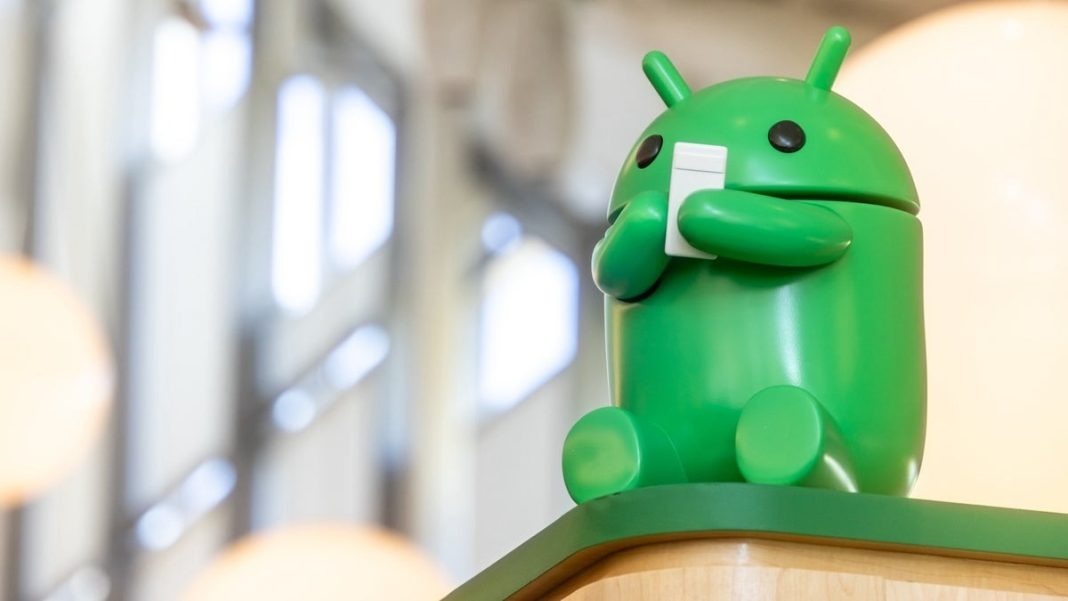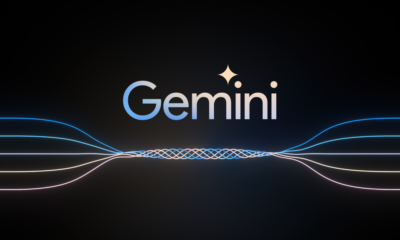Android
Android 16: New system-wide audio input switcher and Google Photos update

With Android 16 expected in mid-2025, a major upcoming feature is a system-wide audio input switcher. This tool will allow users to select audio input devices, like external microphones, for any app directly from a unified menu. Currently, users have to configure audio input on a per-app basis, if supported at all. This change aims to simplify the process and improve audio quality for content creators and professionals using external audio devices.
The audio input switcher expands the existing media switcher, introduced in Android 11, which only manages output devices like headphones and Bluetooth speakers. The new feature, spotted in Android 15 QPR1 Beta 3, is anticipated to be fully implemented in Android 16. This will be especially beneficial for apps that do not currently support changing input devices, enhancing flexibility across all apps.
Additionally, Google Photos for Android has recently updated its status bar design in version 7.7, transitioning from a fully transparent to a translucent bar. The change improves visual consistency, especially in dark mode, making the interface more cohesive when scrolling through images. This update addresses visual contrasts and is part of Google’s ongoing effort to refine user experience across its apps.
Overall, Android 16 is shaping up to offer better audio management and improved user interface elements, catering to both everyday users and professionals.
Android
Google addresses Android 15 private space Issues with Wear OS and preps radio features in Android Auto 13.3 update

Google is tackling some challenges with its Android 15 update, particularly issues surrounding the Private Space feature when used with Wear OS. Additionally, the recent Android Auto 13.3 update hints at upcoming radio station integration and improvements in media control.
Android 15’s Private Space Issues with Wear OS
Android 15’s Private Space is designed to separate and secure specific apps and data on your device. However, Google has identified several issues when users pair their Android phones with Wear OS smartwatches. Here’s what you need to know:
- Notification Problems:
- Normally, notifications from Private Space apps should not appear on your smartwatch. Google specifies that media controls for these apps should also be inaccessible on Wear OS devices.
- However, on certain devices from OEMs (Original Equipment Manufacturers), users are noticing that notifications from Private Space apps are still appearing on their smartwatches when the Private Space is unlocked on their phones. These notifications may show a work profile icon, causing confusion.
- Work Profile Mix-Up:
- Some users may see a work profile tab in the Wear OS app even if they don’t have a work profile enabled on their phone but have Private Space set up. The work profile feature, typically used by businesses to separate personal and work data, is similar to Private Space but not interchangeable, leading to potential confusion.
- Google’s Response:
- Google acknowledges these issues in their support documents but hasn’t provided a specific timeline for fixes. Users can expect that future updates to Android and Wear OS will address these glitches, ensuring a more seamless experience with Private Space.
Android Auto 13.3 Update: New Radio Station Integration
Google is also making significant updates to Android Auto, focusing on enhancing the in-car media experience. The latest Android Auto 13.3 beta hints at new features, particularly related to radio stations and media controls.
APK Insight: What We Found
Google’s APK Insight reveals lines of code suggesting potential upcoming features. By decompiling the latest Android Auto APK, tech enthusiasts have spotted preparations for a Car Media app designed to improve the local media experience, including new radio station categories.
- Expansion of Media Controls:
- Google has been working to integrate local media sources into Android Auto, possibly allowing users to access stored music files alongside live radio options. The Android Auto 13.3 update contains code references to various music genres and radio station categories, including:
- Classic Rock
- Jazz
- Hip Hop
- News
- Sports
- Country Music
- Educational Programs
- Talk Shows
- Weather Updates
- These genres might be part of a new radio feature in the Car Media app, which would allow users to browse radio stations by genre, making it easier to find content tailored to their preferences.
- Google has been working to integrate local media sources into Android Auto, possibly allowing users to access stored music files alongside live radio options. The Android Auto 13.3 update contains code references to various music genres and radio station categories, including:
- Preparation for Local Media Integration:
- The current Android Auto interface already supports streaming apps like Spotify and YouTube Music. However, the new feature hints at deeper integration with local vehicle infotainment systems, enabling access to traditional radio stations.
- This update aligns with Google’s recent initiatives to integrate more with vehicle systems. For example, in collaboration with Ford, Google has launched new features for electric vehicles (EVs), providing real-time battery information and using this data in Google Maps.
What to Expect Next?
While the exact launch date for these new features remains uncertain, ongoing updates indicate that Google is steadily working towards rolling out enhanced media controls and fixing current issues. Here’s a quick overview of what’s coming:
- Fixes for Wear OS and Private Space: Expect updates that will resolve notification mishandling and improve the separation of Private Space and Work Profile features on connected smartwatches.
- Enhanced Media Experience in Android Auto: Users can look forward to a richer in-car media experience with better access to local radio stations and possibly stored music. Google’s focus seems to be on making Android Auto a more comprehensive infotainment platform, aligning with industry trends of deeper car system integration.
Conclusion
Google is actively addressing known bugs in Android 15’s Private Space and is laying the groundwork for an improved media experience in Android Auto. These updates showcase Google’s commitment to refining its ecosystem, ensuring a smooth user experience across devices, and enhancing features in response to user feedback. As more updates roll out, expect a more polished experience on both Wear OS devices and Android Auto, making your digital ecosystem more interconnected and intuitive.
Keep an eye on future updates from Google to enjoy these enhancements as they become available.
Android
Android 15 QPR2 Beta 1: New features, custom modes, Linux Terminal app, and revamped Pixel wallpaper experience Introduction

Google is already pushing out the Android 15 QPR2 Beta 1 update to its Pixel devices, even before the official release of QPR1 in December. This new Quarterly Platform Release (QPR) brings a host of exciting changes, bug fixes, and fresh features to improve user experience. Let’s dive into all the significant updates coming with this release, including a customizable Do Not Disturb Mode, a new Linux Terminal app, and a redesigned Pixel wallpaper interface.
What is Android QPR?
QPR (Quarterly Platform Release) is a mid-cycle update strategy by Google to introduce significant features without waiting for a major Android release. Unlike regular monthly updates that focus on minor bug fixes, QPRs include bigger enhancements and UI changes, making them ideal for testing new features before the next major Android version. The stable release of Android 15 QPR2 is expected in March 2025.
Key Features of Android 15 QPR2 Beta 1
1. Customizable Do Not Disturb Modes
One of the standout features of Android 15 QPR2 is transforming the “Do Not Disturb” feature into a fully customizable “Modes” system. Here’s what’s new:
- Multiple Custom Modes: Users can now create different Modes, each tailored to specific needs. For example, you could have a “Work Mode,” “Sleep Mode,” or “Exercise Mode,” each with unique settings for notifications, alarms, and display options.
- Icon and Trigger Options: Each Mode can have its own icon and be triggered manually or automatically based on time, location, or connected devices. You can choose from over 40 different icons, which will be visible on the status bar and lock screen when the Mode is active.
- Quick Access: Modes can be easily toggled via the new Quick Settings tile, offering users a fast way to switch between different setups without diving into the settings menu.
This new system offers flexibility beyond the traditional “Do Not Disturb” and allows users to customize their phone experience according to their lifestyle.
2. Introduction of a Linux Terminal App
In a bid to enhance productivity on Android devices, Google has introduced a Linux Terminal app in Android 15 QPR2 Beta 1. Here’s what this feature entails:
- Linux Terminal Integration: This feature is designed for developers who need to run Linux commands or apps directly on their Android devices. It uses the Android Virtualization Framework (AVF) to enable a secure environment for running Linux distributions like Debian.
- Developer Options: The Linux Terminal can be enabled from the Developer options under Settings > System. After activation, a Terminal app appears, ready to execute Linux commands.
- AVF Expansion: Initially introduced in Android 13, AVF was created to securely compile sensitive code. In Android 15, Google has expanded its capabilities to support full-fledged operating systems, allowing a seamless experience when running Linux apps.
This update marks a step forward in making Android devices, especially those with larger screens like tablets, more suitable for developers looking to perform complex tasks on the go.
3. Early Redesign of the Pixel Wallpaper App
Google is also revamping the Pixel wallpaper app with changes spotted in the Android 15 QPR1 Beta 1 update. Here’s what to expect:
- Streamlined UI: The traditional tabs for customizing the home screen and lock screen have been replaced with a new swipe-based carousel. This change simplifies navigation, allowing users to switch between home screen and lock screen customization effortlessly.
- New Clock and Shortcut Customization: Customizing the lock screen clock style and shortcuts is now integrated into a bottom sheet design. This new interface displays all clock styles and shortcut options in a single, scrollable view, making it easier to select and preview changes.
- Enhanced Color Palette Picker: The system color picker has been updated to show more options at once. When selecting a color palette, the home screen preview zooms in, providing a clearer view of how the icons and theme will look. The dark theme toggle is also integrated for a quick preview of the theme in dark mode.
These UI changes aim to make the wallpaper and style customization process more intuitive, giving users a better preview of their adjustments.
Device Compatibility
The Android 15 QPR2 Beta 1 update is available for a wide range of Pixel devices, including:
- Pixel 6 Series: Pixel 6, Pixel 6 Pro, Pixel 6a
- Pixel 7 Series: Pixel 7, Pixel 7 Pro, Pixel 7a
- Pixel 8 and Pixel 9 Series: Pixel 8, Pixel 8 Pro, Pixel 8a, Pixel 9, Pixel 9 Pro, Pixel 9 Pro XL, Pixel 9 Pro Fold
- Others: Pixel Tablet, Pixel Fold
- Android Emulator: Available for developers using Android Studio
Users enrolled in the Android Beta Program for Pixel can receive the update via OTA (Over-The-Air). Alternatively, users can manually flash the factory image or sideload the update if needed.
How to Install the Android 15 QPR2 Beta
To get started with the Android 15 QPR2 Beta 1 update:
- Join the Android Beta Program: Enroll your compatible Pixel device at the Android Beta Program website.
- Check for Updates: Once enrolled, go to Settings > System > System Update to download the beta update.
- Flash or Sideload: Advanced users can also opt to flash the factory image or sideload the OTA update manually.
Upcoming Features and Expectations
While this update brings substantial new features, it’s clear that Google is laying the groundwork for even more significant changes expected in Android 16, slated for release in 2025. Some anticipated improvements include:
- Further Enhancement of Linux Integration: With the introduction of the Linux Terminal app, Google is expected to expand its capabilities, possibly supporting more Linux distributions and better compatibility with Android’s Virtualization Framework.
- Advanced Customization with Modes: As Google continues to refine the Modes feature, we might see more triggers and deeper integration with third-party apps and services, making it even more versatile.
- UI Overhauls Across Pixel Devices: Based on the early design changes in the wallpaper app, we can anticipate a more cohesive design language throughout Pixel’s UI in future updates.
Conclusion
The Android 15 QPR2 Beta 1 update brings exciting enhancements to Pixel devices, focusing on productivity, customization, and user experience. With features like the customizable Modes system, a developer-focused Linux Terminal app, and a revamped Pixel wallpaper app, Google is setting the stage for a more versatile and user-friendly Android ecosystem. Users looking to get an early taste of these features can join the Android Beta Program, but it’s advisable to back up your data as betas may still have some stability issues.
This update is just the beginning, and we can expect even more polished features in the stable release slated for March 2025. As Google continues its quarterly update strategy, Android users can look forward to receiving new capabilities and enhancements more frequently, making the Android experience more dynamic than ever.
Android
Android 15 November Update: Key fixes and security enhancements for Pixel devices

Introduction: The November security update for Android 15 is now rolling out to Google Pixel devices, addressing multiple performance, security, and functionality issues. This update covers the Pixel 6 series up to the latest Pixel 9 series, with tailored fixes to enhance user experience and ensure device security. Released mid-week, the patch fixes 44 security vulnerabilities across the Android system, with improvements particularly focused on Bluetooth, display, camera functionality, and user interface transitions.
What’s Included in the November Security Patch:
- Security Enhancements:
- Vulnerability Fixes: Android 15 November patch addresses 21 security vulnerabilities dated 2024-11-01 and 23 dated 2024-11-05, classified as high to critical. Some high-risk vulnerabilities like CVE-2024-43047 (Kernel) and CVE-2024-43093 (Elevation of privilege) had the potential for limited exploitation, making these fixes vital for device protection.
- Device-Specific Fixes: Google has also listed three additional security improvements specifically for its Pixel line, aiming to enhance device stability and security.
- Firmware and OTA Availability:
- The patch can be downloaded as factory images or OTA (Over-the-Air) updates, with sizes varying depending on the device. For instance, the Pixel 9 Pro XL’s update is around 57.35 MB.
Device-Specific Improvements:
- Global Updates Across Models (AP3A.241105.007 and AP3A.241105.008): Devices covered include Pixel models from 6 up to 9, with distinctions for certain issues on the newer Pixel 9, Pixel 9 Pro, Pixel 9 Pro XL, and Pixel 9 Pro Fold.
Key Fixes by Device Functionality:
- Bluetooth Connectivity:
- Improved Bluetooth range stability, particularly on Pixel 9 models under various conditions, ensuring more reliable connectivity.
- Camera Stability:
- Fixes camera tilt when switching between different zoom levels on the Pixel 9 series, enhancing camera stability and reducing unintentional shifts.
- Display and Brightness:
- Resolved a flickering issue affecting screen brightness on the Pixel 8a and flashing white dots observed on the Pixel 9 series under certain conditions.
- Adaptive brightness issues, which occasionally prevented automatic adjustments, are now resolved for the Pixel 9 series.
- Touch Sensitivity:
- The patch improves responsiveness for touch interactions on the Pixel 9 models, addressing difficulties in dismissing the keyboard in some cases.
- User Interface (UI) Enhancements:
- This patch provides smoother transitions and animations across various Pixel devices, enhancing the fluidity and performance of the user interface.
How to Get the Update:
- To install the November update, users can check their device’s system settings under System > System Update. It is recommended to back up any essential data and ensure that the device is connected to a stable Wi-Fi network before beginning the update process.
Conclusion: The November Android 15 update not only reinforces device security with critical patches but also delivers tailored fixes for Bluetooth, display, camera, and other functional areas, particularly benefiting the latest Pixel 9 series. This rollout continues Google’s commitment to improving user experience and safeguarding devices against vulnerabilities, ensuring Pixel devices remain secure and optimized for day-to-day use.
-

 Apps9 months ago
Apps9 months agoGboard Proofread feature will support selected text
-

 News9 months ago
News9 months agoSamsung USA crafting One UI 6.1.1
-

 News8 months ago
News8 months agoBreaking: Samsung Galaxy S22 may get Galaxy AI features
-

 News8 months ago
News8 months agoSamsung Galaxy S23 Ultra with One UI 6.1 and all S24 AI features revealed
-

 News9 months ago
News9 months agoOne UI 6.1 Auracast (Bluetooth LE Audio) feature coming to many Samsung phones
-

 News9 months ago
News9 months agoSatellite SOS feature coming to Google Pixel phones, evidence leaked
-

 Apps6 months ago
Apps6 months agoGoogle’s fancy new Weather app is finally available for more Android phones
-

 News9 months ago
News9 months agoGoogle Pixel evolves as Europe’s third best selling flagship








